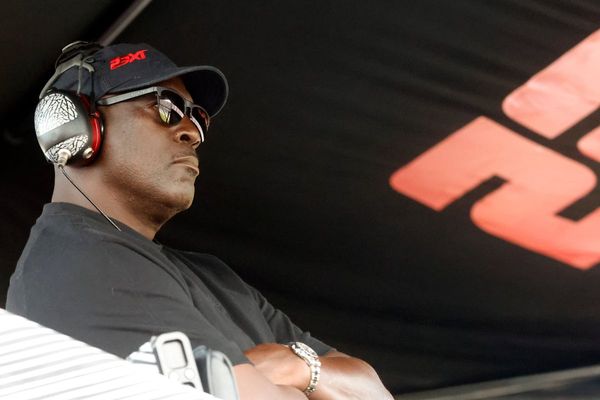Courtney Hughes normally has a "typical Aussie Christmas" at her family's farm on the far South Coast.
"Big family, lots of food, outdoor cricket, we throw floaties in the dam," she said.
But this Christmas will be different. It will be in the cancer ward at Canberra Hospital.
"I'd do anything to be home but I can't be silly. I've got to put my trust in the doctors," Ms Hughes said.
Ms Hughes, 33, is battling acute myeloid leukaemia and Boxing Day will mark a month since she started treatment.
Unfortunately, this will be the second Christmas she has had to spend in hospital. She was first diagnosed with acute myeloid leukaemia in November 2019 and spent that Christmas in hospital. Ms Hughes was told there was only a small chance it would return.

Her life was saved the first time by an incredible gift from her sister, who donated bone marrow. She was a perfect match for Ms Hughes.
"God bless her, her bone marrow got me through a whole uni degree because my sister is an intellect," she said.
Ms Hughes is unsure if or when she will need another bone marrow transplant, however, this time she will be unable to receive a transplant from her sister. She will likely need to use an anonymous donor. But Australia's registry is low.
'It saved my life'
A report from the Australian Bone Marrow Donor Registry found the donor pool in Australia was not fit for purpose and significantly more donors were needed.

Australians needing blood stem cell (bone marrow) transplants are increasingly relying on overseas donors.
The pool of donors in Australia only donates to around 70 patients in in the country each year. About 1000 patients seek donors each year and only half of those discover a match within their family.
The registry has a goal to have 3 per cent of the Australian population aged from 18 to 35 on the list within five years. Doctors prefer donors in this age range as patients tend to do better with younger donors. People age off the list by the time they are 60 years old. Men are preferred as they are often larger and can donate more cells and there are logistical issues if women are pregnant or breastfeeding.
Blood cell and bone marrow donors do not have to undergo an invasive procedure. There are two types of procedures; one is similar to a blood donation but takes a little longer and the other is done under general anaesthetic but is normally a day procedure.
It is easy to sign up to be a donor as well; it can be done online or when giving blood.

And although it's a minor procedure for the donor it has a major impact for the recipient.
"It saved my life," Ms Hughes said.
"It's really, really important we try and get more people on the donor registry ... people die waiting for a donor.
"You quite literally get the opportunity to save a life because people who require a stem cell transplant ... it's a last resort."
'I lived every day'
There are 53 people in Australia told each day they have blood cancer and, on average, 17 people die a day from the disease. It is one of the nation's most deadly cancers.
The rate of blood cancer is also increasing and the number of people diagnosed in a year is expected to double by 2035. About 19,500 people will be diagnosed in 2023.

It is not genetic and it is not influenced by lifestyle choices. Anybody at any age can be diagnosed.
The Leukaemia Foundation also holds a Christmas appeal where people can donate. Proceeds will go towards providing accommodation to families of those fighting blood cancer.
And this accommodation provides an opportunity for Ms Hughes to spend Christmas outside of a hospital ward. She is hopeful she can at least get "gate leave" on Christmas Day and spend it with her mother who is staying at the Leukaemia Foundation's John James Accommodation Village.
In the four years since her first diagnosis, Ms Hughes studied to become a nurse and finished her degree just before she was diagnosed again.
"It's gonna be over soon and life moves on and I'll eventually be a nurse on the ward. And I won't forget what it's like to be a patient," she said.
Ms Hughes is also keen to get back to all her adventures. She kayaks, swims, goes camping and does triathlons. She lives her life to the fullest for those who no longer have the chance.
"After the first time I had AML I lived every single day. I lived and that's because I met a friend, Summer, on the ward in Royal North Shore [Hospital] and she lost her battle to AML," she said.
"And I never wanted her life to be in vain and I lived every day ... and when I finish this I'll continue to make sure that no one who has lost this battle is in vain. Their lives are not in vain."
- For more information, visit abmdr.org.au.







